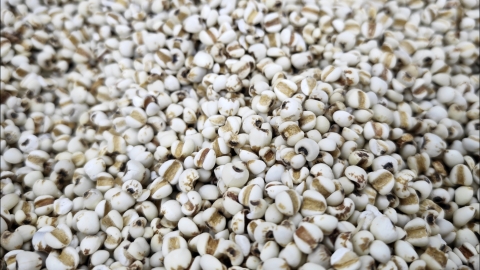What are the traditional Chinese medicines for removing dampness?
Generally, commonly used Chinese herbs for removing dampness include Poria (Fuling), Coix Seed (Yiyiren), Agastache (Huoxiang), Atractylodes (Cangzhu), and Magnolia Bark (Houpo). The details are as follows:

1. Poria (Fuling): Sweet and bland in taste with a neutral property, it benefits the spleen and promotes diuresis. It can both strengthen the spleen and stomach and help expel dampness through urine. It is suitable for dampness accumulation caused by spleen deficiency, often presenting symptoms such as abdominal distension, poor appetite, and loose stools. It is commonly used in combination with other herbs.
2. Coix Seed (Yiyiren): With a cool nature, it promotes diuresis, removes dampness, strengthens the spleen, and stops diarrhea. It helps eliminate excess body fluids and improves symptoms such as heaviness and edema caused by dampness. After being stir-fried, its cold nature is reduced, making it more suitable for individuals with spleen and stomach deficiency-cold conditions for dampness removal and regulation.
3. Agastache (Huoxiang): Pungent in taste with a slightly warm nature, it effectively resolves dampness, invigorates the spleen, relieves summerheat, and disperses exterior syndromes. It is particularly effective for fullness and distension of the abdomen, nausea, vomiting caused by dampness obstructing the spleen, and symptoms such as fever and chest tightness caused by summerheat-dampness. It is commonly used by decocting or steeping in hot water.
4. Atractylodes (Cangzhu): Warm in nature, it dries dampness, strengthens the spleen, dispels wind, and relieves cold. It is suitable for excessive dampness accompanied by weakened spleen and stomach function. It can relieve symptoms such as poor appetite and limb fatigue caused by dampness blocking the middle jiao. It also provides some relief for joint pain caused by cold-dampness.
5. Magnolia Bark (Houpo): Warm in nature, it removes dampness, eliminates phlegm, regulates qi, and relieves fullness. It helps resolve internal dampness and alleviates symptoms such as abdominal distension, chest tightness, and coughing caused by dampness obstructing qi circulation. It is often used together with other dampness-resolving herbs to enhance the effect of regulating dampness stagnation.
When using Chinese herbs to remove dampness, it is important to choose appropriate herbs according to one's specific type of dampness and constitution, avoiding indiscriminate use. Individuals with a yin-deficiency constitution or without obvious signs of dampness should not take dampness-removing herbs for a long time, as this may damage yin fluids. It is advisable to consult a professional practitioner before use to determine suitable herbs and dosages.




